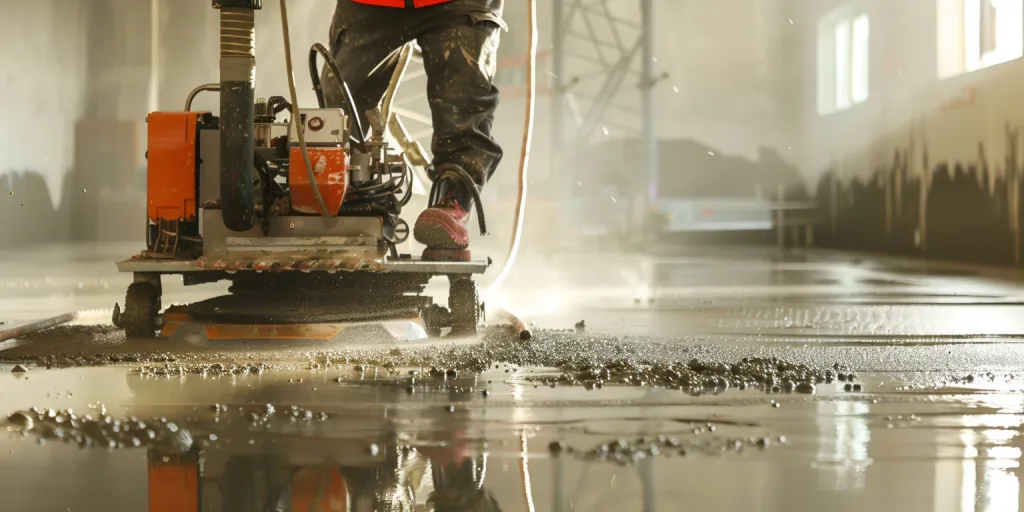There are no job sites without power trowels, which are used for the final finishing of concrete surfaces. Such tools help speed up the process of concrete finishing, while also making it way more qualitative and flawless. Here is a small guide that will help you learn what a power trowel is, how it works and why you should most definitely use it. We will also consider the average cost of power trowels, as well as the top modells on the market today.
Table of Contents:
1. What is a power trowel?
2. How do power trowels work?
3. How to use a power trowel
4. How much does a power trowel cost?
5. Top power trowels on the market
What is a power trowel?
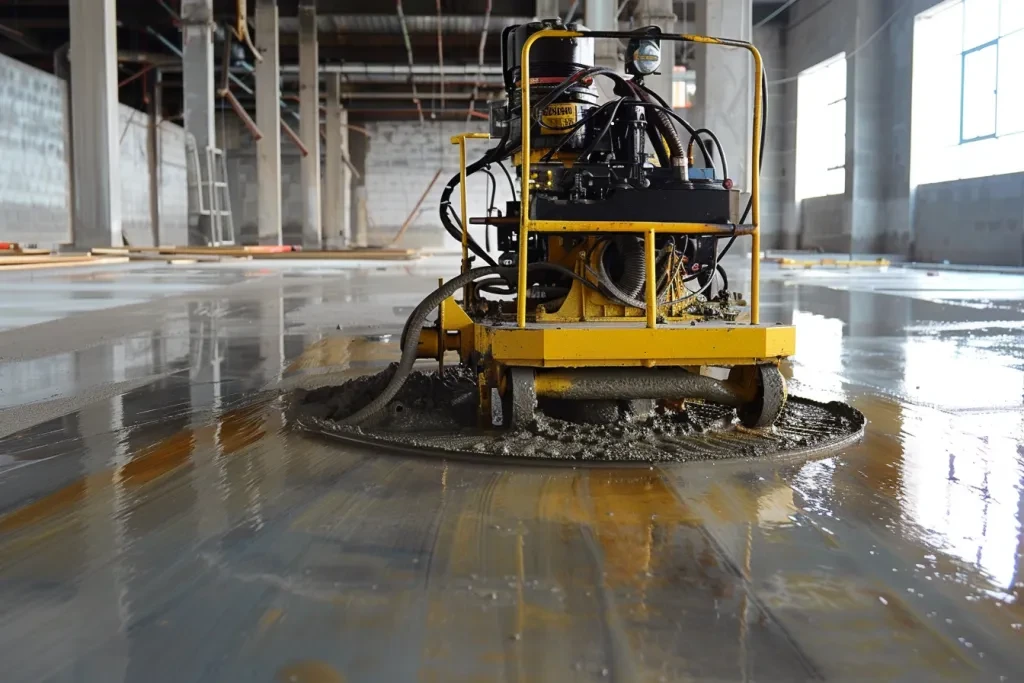
In construction work, a power trowel is a heavy equipment for concrete slab finishing work .It is also called a power float or helicopter, since it looks like a helicopter. This machine is ideal for finishing large concrete slabs in commercial buildings, warehouses, industrial facilities. There are two types of power trowels: walk-behind and ride-on trowels.
Walk-behind trowels are small, hand-operated machines that are used for smaller areas or where practicality is an issue. Ride-on trowels are much larger and more powerful units used for larger concrete surfaces. Power trowels are used to finish concrete, smoothing out the surface and creating a flat area once the concrete has been laid and some curing has taken place. This ensures a hard and durable surface while maintaining an attractive final finish.
The major parts of a power trowel include the engine, a set of blades, and (for the walk-behind models) a handle. For a ride-on model, the parts include the engine, a set of blades, a seat and controls. The blades, usually made of steel or composite materials, are connected to the spinning arm/assembly and they do the smoothing work by moving in small motions. The engine, typically a gasoline engine, powers the spinning mechanism.
In contrast, the power trowel has drastically cut down the time and labour needed to finish concrete compared to hand trowelling, providing a much smoother and more consistent finish, which in turn allows for the creation of a higher-quality and more functional concrete surface.
How do power trowels work?
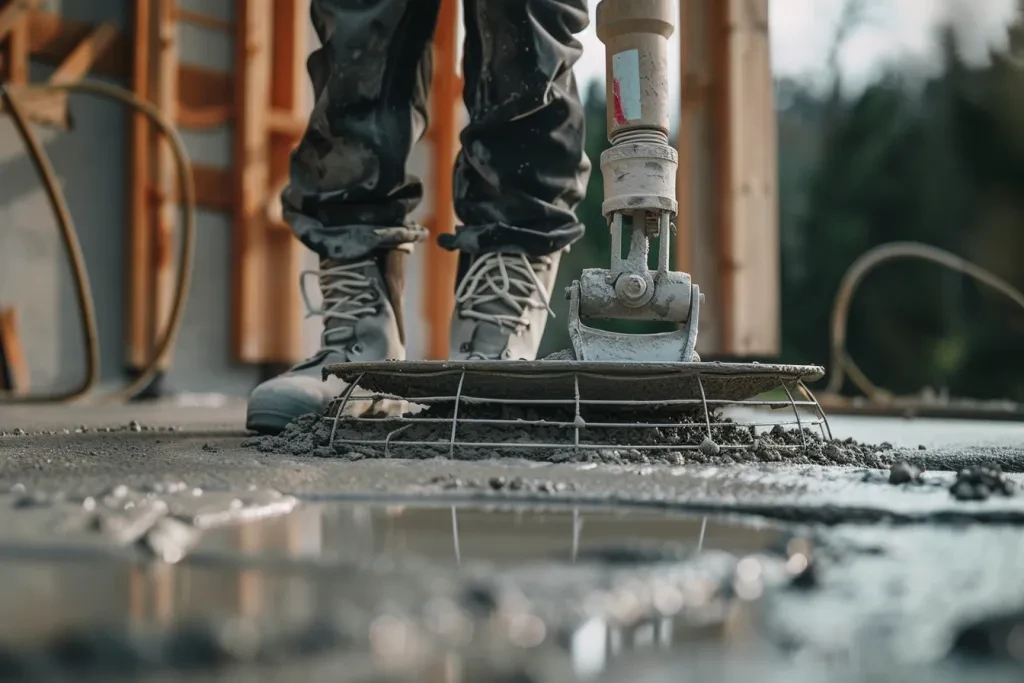
The power trowels work by rotating the blades that vibrate on the concrete surface to make it smooth and flat. The blades are attached to an assembly that spins at high speeds and creates a frictional force to level the surface. Engine gasoline, electric or diesel powers the engine depending on the model and the application.
Once the engine is started, it translates its energy into rotary motion of the blades. The operator sets the speed and angle to control the blade action over the concrete surface. The operator can set the blade angle to apply more or less pressure to the concrete. For the first pass, when the concrete is loose and fluid, the operator sets the blade angle flatter to float the concrete, which tends to bring the fine aggregate to the surface. After a couple of days, as the concrete has begun to set, the blade angle is increased to apply more pressure. The finer grit applied to the concrete surface at this point will help produce a smoother polished surface.
Power trowel operations have several steps. First, the concrete needs to set just enough not to be gouged by the machine’s weight. The first pass is usually done with float blades, which are large and flat in order to distribute the machine’s weight, and avoid gouging the surface. After the second pass, the concrete needs to be buffed enough to be imprinted by the finer finishing blades.
Moreover, some machines have combination blades that can be used for floating or finishing and are useful on small jobs or where frequent changes between the two are required. The skill of the operator in controlling the machine and adjusting the blade angles is of utmost importance in the quality of the finish.
How to use a power trowel
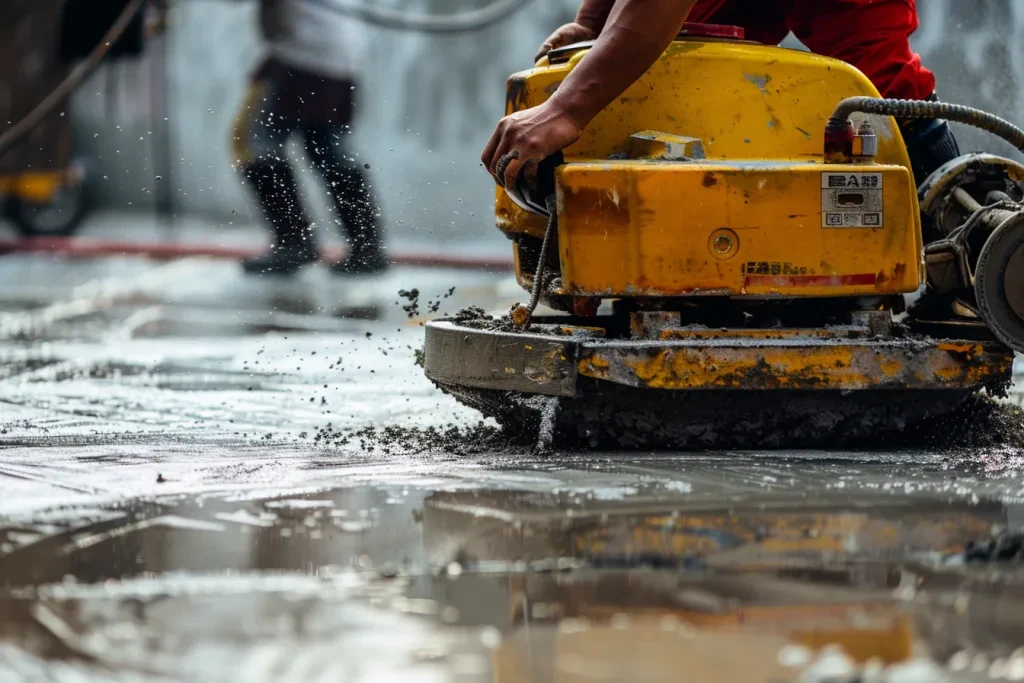
If done correctly, the operator can create a smooth, level concrete floor using a power trowel. The operator must know when to use the right technique to get the best result. Here are the steps in using a power trowel:
- Preparation: Make sure the concrete has set enough to support the trowel without sinking. Generally, this will be the point where you can walk on the surface and the concrete just barely makes an impression on your shoe. Remove any debris that may get in the way of the trowel.
- Initial Pass: Turn on the power trowel, and adjust the angle of the blades to be parallel to the planned finish. For the first pass, use float blades. For a walk-behind model, you are going to want to walk in a pattern (that could be circular, back and forth, and so on) to traverse the entire surface evenly, and make sure the trowel blade covers an adequate width of the slab as you progress across. For the ride-on model, use the controls to steer across the surface.
- Next Passes: As the concrete cures, gradually push the blade with more pressure by widening the blade angle. Switch to finishing blades after your float passes. Make several passes over the area, each time widening the blade angle slightly to smooth out the finish. Pay attention to the corners and edges which will take more passes than the middle of the driveway.
- Final Finishing: Take a final scan of the surface, checking for any imperfections. Make additional passes if needed. If you are seeking a high-gloss finish, replace the standard blades with combination blades or speciality polishing blades. Once you’re happy with your finish, clean the blades and the machine to remove dried concrete and improve longevity.
How much does a power trowel cost?

The cost of a power trowel can vary depending on many factors like type, size, brand, or other features. The cost breakdown is as follows:
- Walk-Behind Power Trowels: These are cheaper and are often suited to smaller-scale work. Basic machines start around $1,500 to $2,500, mid-range models with more powerful engines and additional features, such as the ability to tilt the blade angle and good manoeuvrability, go for $3,000-$4,500, and high-end machines designed for professional use with powerful engines and more controls are priced between $5,000 and $7,000.
- Ride-On Power Trowels: The higher cost associated with ride-on power trowels comes with size, power and ability. A basic ride-on in the $8,000-$10,000 range is a good starting point. Mid-range trowels, with more features and better performance, can run between $12,000 and $20,000. The high-end models, often meant for large commercial projects and usually the most technologically advanced in the industry, start at $25,000 and can go up from there.
- Additional Expenses: In addition to the initial purchase price, you need to factor in the costs for maintenance, spare parts and consumables such as blades. Blade quality and maintenance are of great importance to the lifespan of the machine and the quality of the finish.
In my opinion, spending money to power trowel is worthwhile when it comes to efficiency of finishing and caliber of finish. The model chosen should be based on the size of project and budget to get a good value for money.
Top power trowels on the market
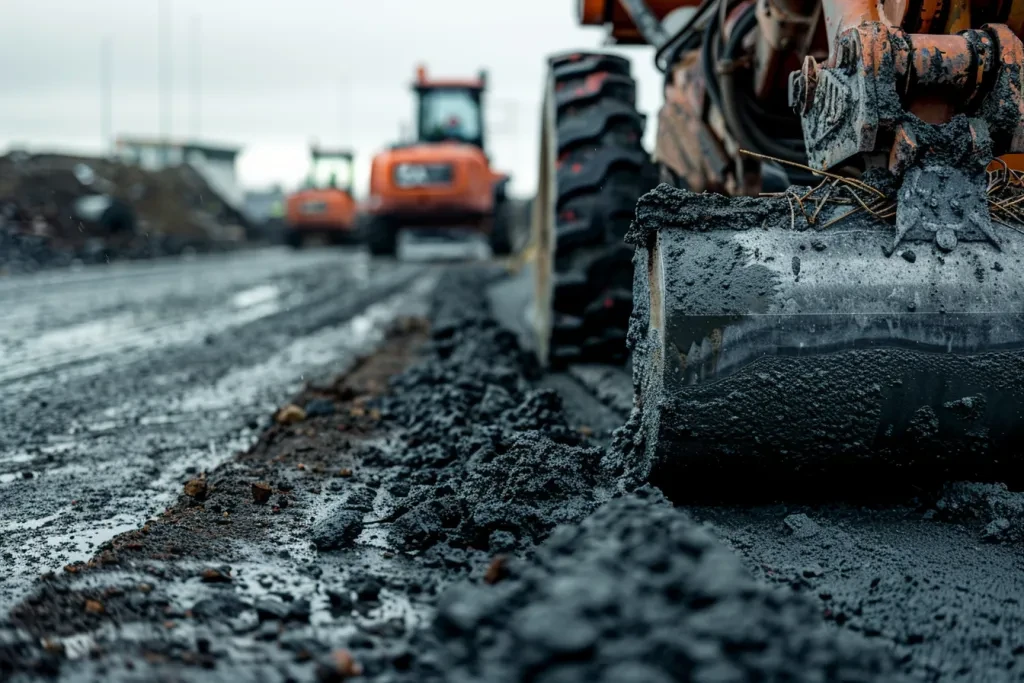
As well as the mentioned features above, you also need to check for reliability, efficiency and features of your power trowels. Here are some of the best power trowels you can find in the market:
- Multiquip Whiteman HDA48413H power rodeo trowel: A ride-on trowel by Whiteman, the HDA48413H is a durable, high-powered machine constructed with a Honda engine and heavy-duty gearbox that both increase performance and reliability. With its hydraulic steering, the HDA48413H enables precise control of concrete while its durability makes it ideal for large commercial projects. Its design also produces an incredible finish.
- Bartell B446 Pro Series: The Bartell B446 Pro Series is a powerhouse of a walk-behind trowel. Designed for heavy, commercial-grade work, the B446 delivers the power and precision you need to complete the project faster and more affordable than ever before. The B446 features a warrantied engine, adjustable blade pitch, and an ergonomic handle design that makes this trowel comfortable for extended periods of operation. The Bartell B446 Pro Series can be used for residential or commercial projects, and it’s a great money-saving option for finishing tile and other materials on a variety of surfaces.
- Husqvarna CRT48: High-performance ride-on trowel for large area concrete finishing.Powerful engineDual-fuelThis machine comes with an excellent control system for operator ease and efficiency.Ideal for a professional-grade finish.Efficiency and durability.
- Allen Engineering MSP445: Robust 445 walk-behind trowel with a strong engine, tight, light blade control and low-profile design for better visibility and control. Excellent for general concrete finishing.
- MBW F36/4: Contractors Am (CAC) have a great deal on the MBW 36/4 walk-behind trowel. The 9 ft/lb 36/4 MBW walk-behind trowel with 4 hp OHV engine, adjustable handle, and heavy-duty construction.The 9 ft/lb 36/4 MBW walk-behind trowel is suited for all your small to medium, residential to commercial projects. It has a smooth finish with an excellent texture. It comes with high-quality, long-lasting components.
Conclusion:
Power trowels are an indispensable construction industry tool, empowering builders to speed up laying and finishing of concrete, to achieve the best possible finish for their project.
However, it is key to know how these tools work, how they are used, their costs and the most popular model to date.
Selecting the best power trowel for your needs will increase productivity and produce a long-lasting, well-finished concrete surface.
